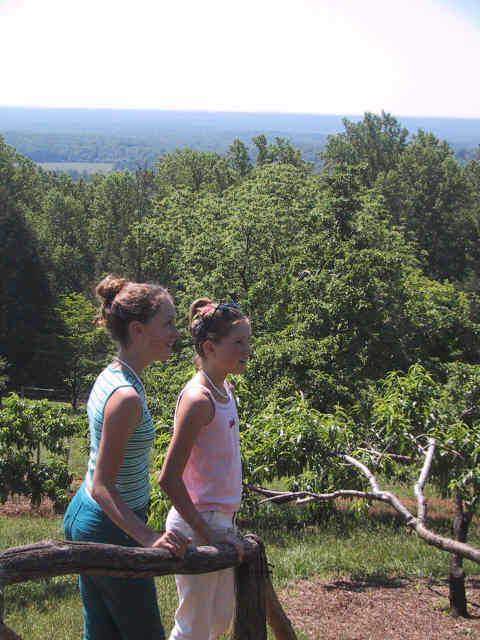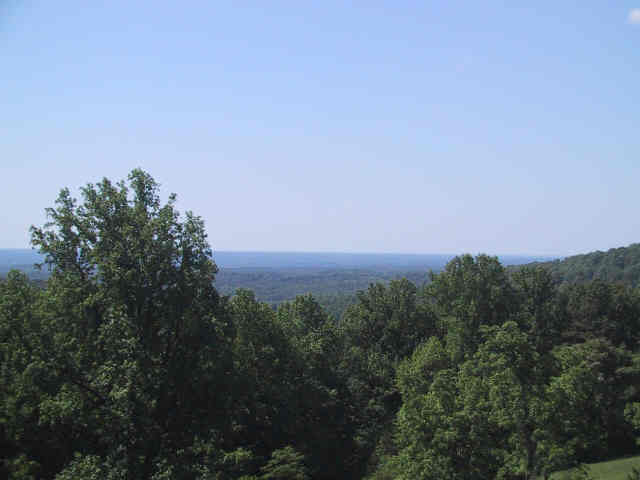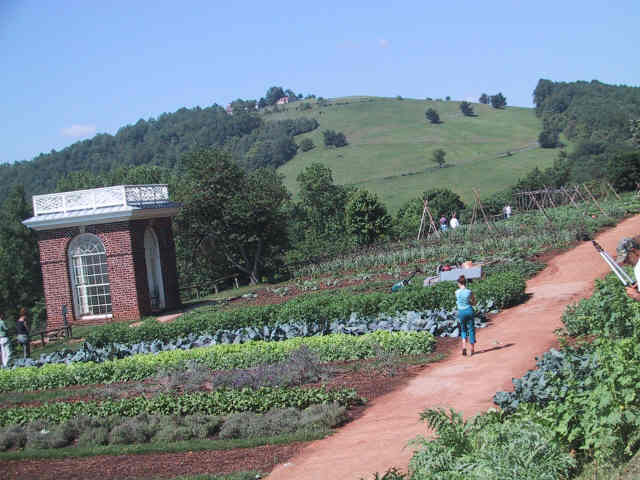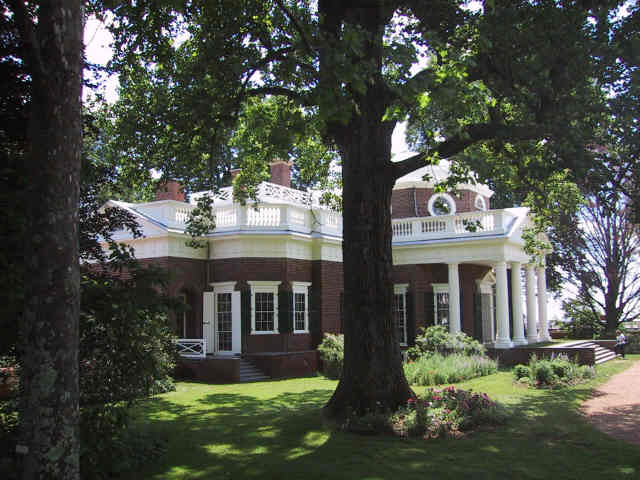

We struck out at about 9:30 for Monticello, just outside
Charlottesville. When we got there, we were surprised to find a dozen or
more tour buses and many dozens of cars already in the parking lot -- this was
apparently a very popular spot. We had heard little about Mr. Jefferson
in Williamsburg, aside from comments that, although he was a brilliant and
learned man, and an especially gifted writer, he was not reported to be much
of a public speaker, being rather shy and having a high squeaky voice.
We started our acquaintance with this great man by touring his restored
gardens. He was quite a botanist, and grew more than a dozen varieties of
peas alone. His vegetable garden was 1000 feet long and 80 feet wide,
running east-west and so exposed to optimal sunshine. Monticello is perched
on an 800 foot tall hill, well away from a major river -- quite unusual for the
time, since rivers were the highways of the 18th century. However, the
views were sweeping and peaceful. I think he chose wisely.


Jefferson personally designed every aspect of Monticello, having studied European
architectural styles and influences during his 5 years in France, just after the
American Revolutionary war. He had the small brick gazebo below built at
the center of his gardens. It was a favorite spot of his to read, of which
he did a quite a lot. His library contained books in 7 languages, and
counted thousands of volumes. It was so vast that, when the fledgling
Federal Library burned down, he donated his entire collection, which was the
beginning of the Library of Congress.

We were forbidden from taking pictures inside the house, but it was amazing,
reflecting the tastes and influences on this very brilliant man. He loved gadgetry,
and had many unusual ones in his home, often self designed, including a wine
bottle dumb waiter concealed in the side of a fireplace, a 7-day calendar clock
that marked off the day, hour, minute and second, a revolving shelved door for
food delivery, and many other innovations for the time. The house itself
is actually rather modest in size, compared to the plantation mansions of his
peers.

We came away with a large and very genuine respect for this man, our 3rd
president and author of the Declaration of Independence -- indeed, an
awe. He minutely planned nearly everything he did, including his own
epitaph, which reads: "Here was buried Thomas Jefferson, Author of the
Declaration of American Independence, Of the Statute of Virginia for Religious
Freedom, and Father of the University of
Virginia". No mention of his presidency, which he apparently regarded
as lots of hard work.
May 24 to 29 - Shenandoah
![]()